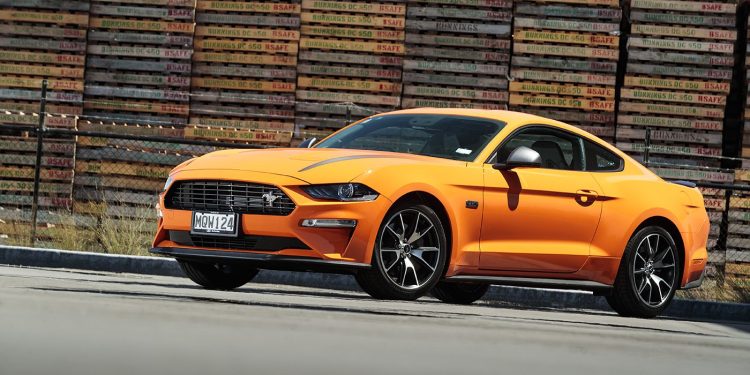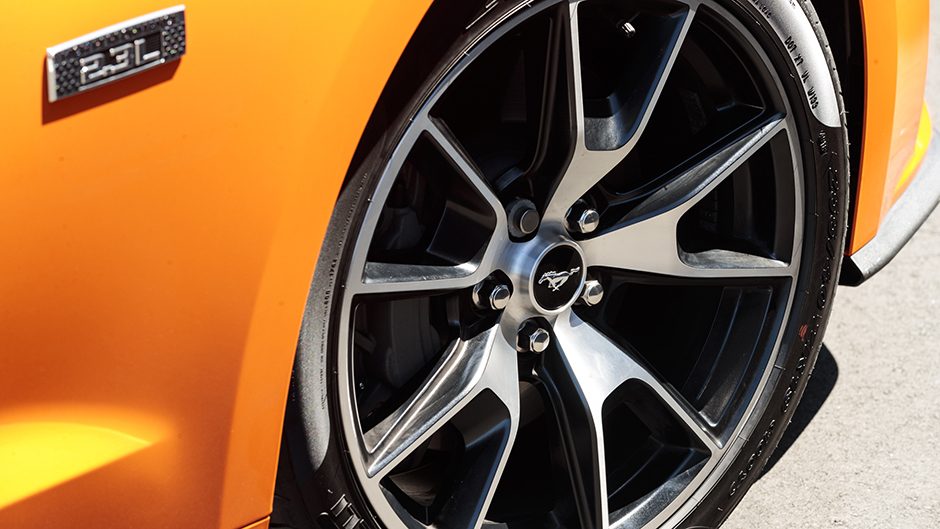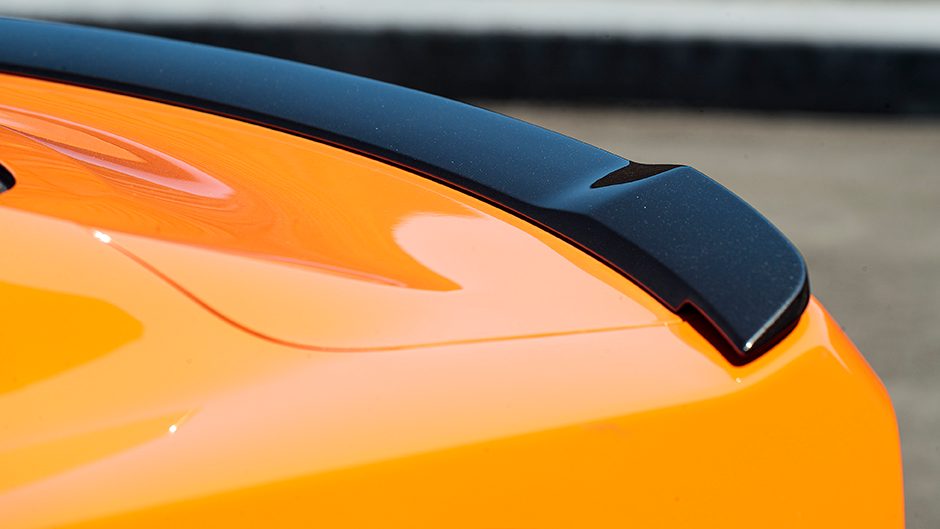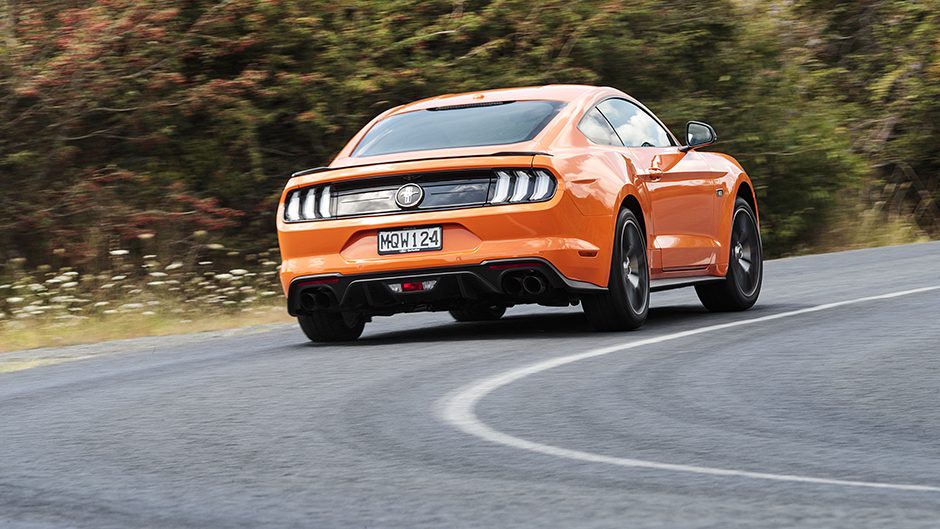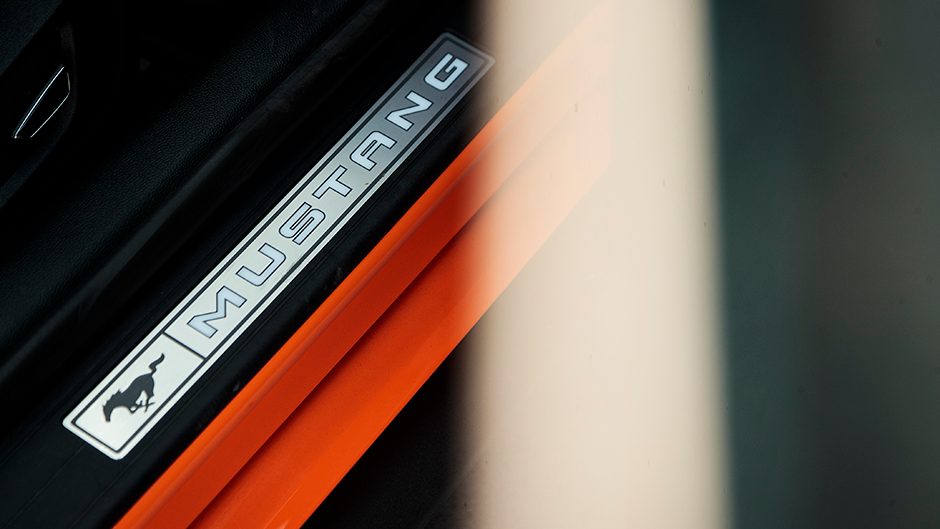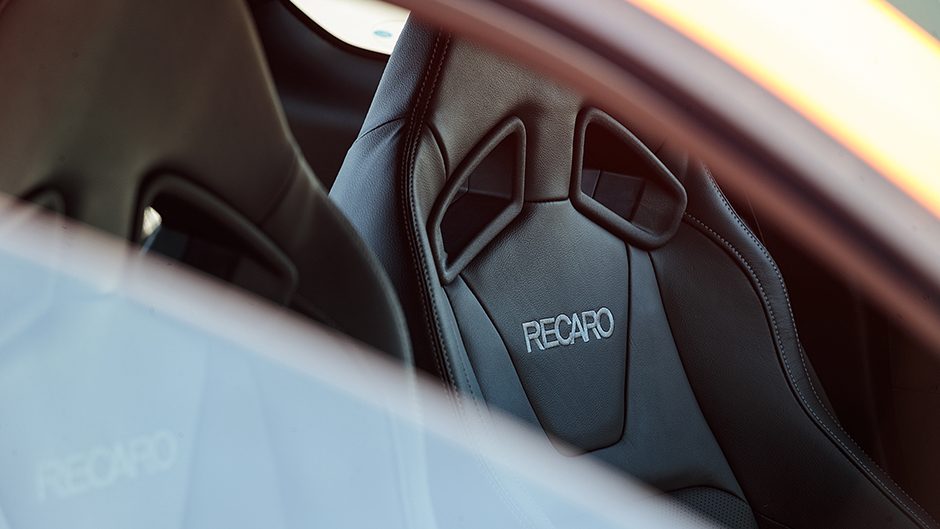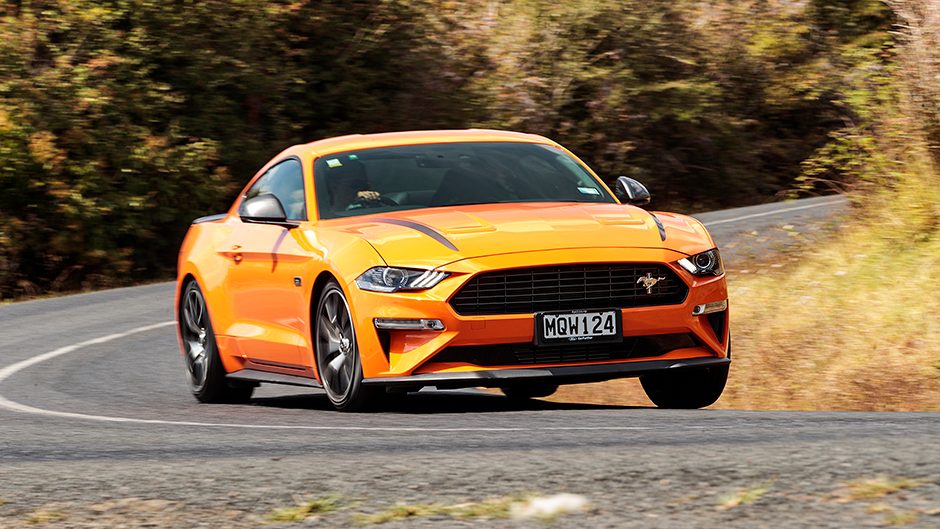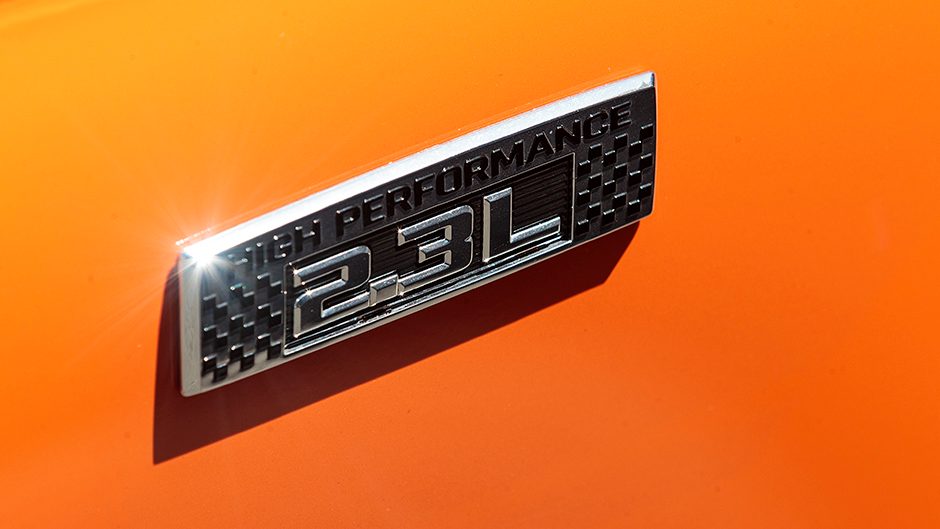2020 Ford Mustang 2.3L review
Words Kyle Cassidy | Photos Tom Gasnier
Ford has added some hot sauce to its turbocharged Mustang, resulting in the high performance 2.3L fastback. Is it enough for people to forgo the V8?
It’s still hard convincing people that the turbo’d Mustang is a good thing. We’d not had the new High Performance 2.3L long before someone commented that our idling Mustang sounded funny, like it had dropped a bank of cylinders. Then someone pointed to the badge on its guard and said ‘High Performance 2.3? Sounds like an oxymoron’. So much angst, but if you drive the new HP 2.3, you’ll likely come around to the idea that the four-cylinder Mustang is worthy, if your ego can handle it.
The HP is the only four-cylinder Mustang you can get here now, identifiable by its unique grille treatment complete with a ‘tribar’ Pony badge set off to the left. On the rear is a discreet lip spoiler, and the machine-finished 19-inch alloy wheels are reminiscent of those on the 50th edition GT. The General Lee colour scheme is called Twister Orange and, along with Grabber Lime, is a hue from Mustang’s past.
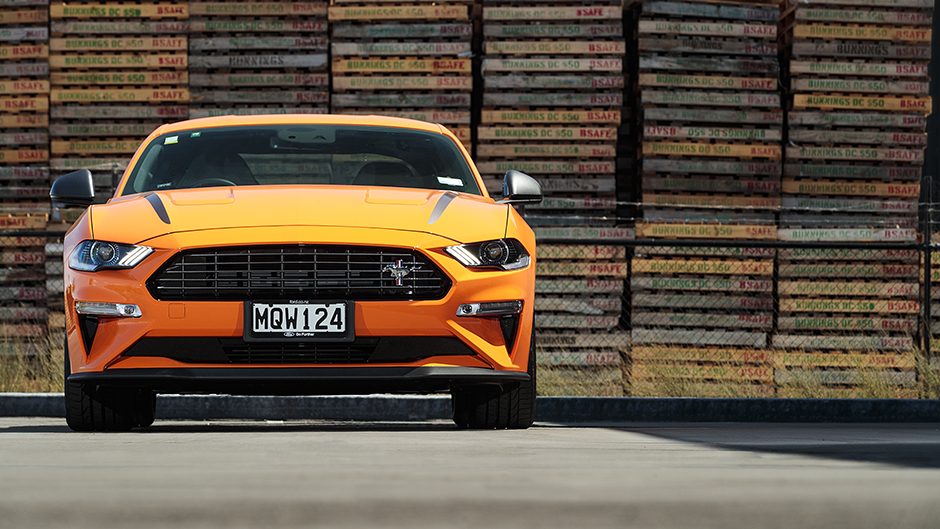
Ford Performance has had a hand in developing the hi-po four, the 2.3 now making 236kW with 448Nm at 3800rpm. It’s not up much from the 224kW and 441Nm of the old Ecoboost, but they reckon the torque curve is flatter, 90 per cent of the twist on from 2500 through to 5300rpm, and it produces more power up top. This is thanks to a larger aluminium twin-scroll turbocharger, the same used by the Focus RS, improving boost response.
However, it proved slower than the 2018 version we tested, and that’s despite the gear ratios having been shortened too. But you can put this down to the heat of summer. Where we managed to coax the 2018 Ecoboost to 100km/h in just 5.2sec, we couldn’t better 5.7sec in the HP. And it’s not for a lack of traction, it launches well from just 2000rpm, but the sweltering ambient conditions clearly had the computer in self preservation mode, keeping things in check by limiting boost.
And it’s probably why we thought it didn’t pull as hard up top as they said it would. Still we didn’t think poorly of the power delivery otherwise, these long stroke turbo fours never have a lust for revs anyway, and it still works well short shifting around the 5000rpm mark.
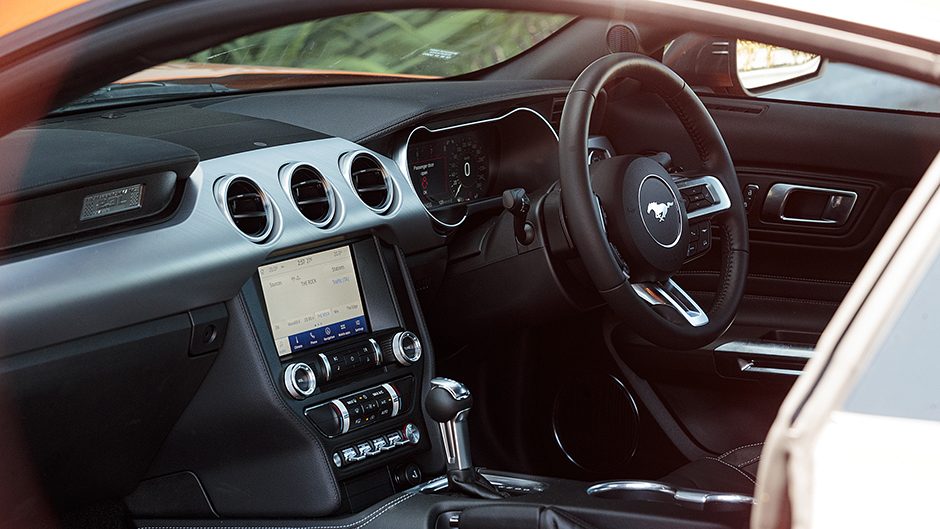
The ten-speeder is a quick and slick swapper of cogs, though this one seemed keen to get into a gear higher than desirable when in the racier drive modes. It was also less forthcoming with the downshifts when braking for a bend and instead picked up a lower gear as you accelerated out. Though that shift is smooth, it’s not the way we like to do it, so we took to the paddles, shifting between third, fourth and fifth to keep the 2.3 in the meat of its pulling zone.
Though there’s less of it, the torque is on earlier than it is with the V8 so the HP still hauls well off the curves, the rear treads capable of putting it down when you squeeze the gas on quickly. The Turbo runs lesser rubber than the V8, the P Zeros not as grippy as the Cup Sports of the GT, and are narrower out back (255s vs 275s) so the rear doesn’t feel as stuck in terms of ultimate lateral load. We can confirm this as the day we took the HP out we did the same road again in the GT, albeit an RTR-enhanced version, which you can read about next month.
Furthering the HP’s carving abilities, it gains sturdier sway bars with a 32mm stabiliser up front and 24mm bar at the rear. These keep the roll tamed, and sharpen the front end further. Since they rejigged the Mustang in 2018, the front tyres can handle a thoroughly decent corner load. The 2.3 HP is even better in this regard, with a sharper initial turn-in than the V8. The steering is more positive, with a decent weight to the tiller in Sport mode, and a good feel for the action. The brakes could do with more muscle; they don’t clamp as hard as the GT’s six-pot stoppers, and the pedal’s not as tactile either. They start to go off after a decent strop.
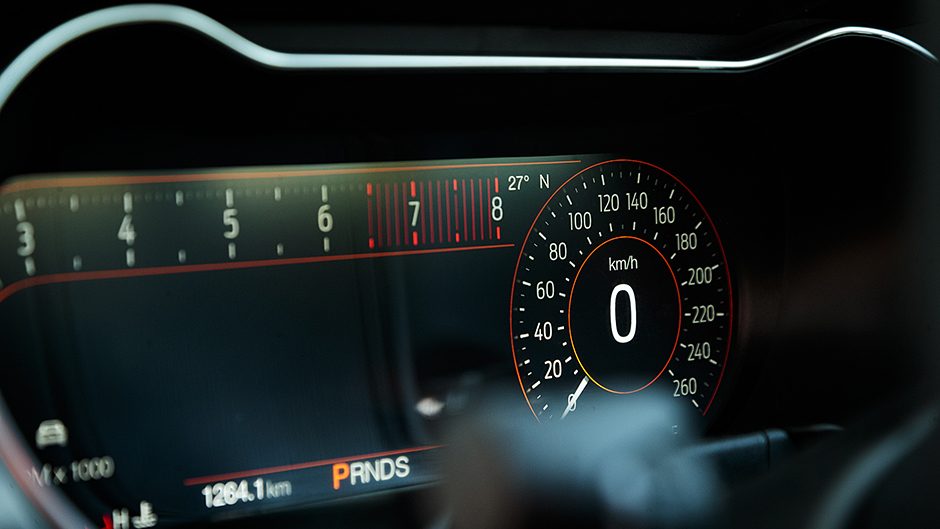
With the optional Magneride suspension, the ride is more supple around town while it brings added control in Sport plus mode, firming a tad too much in the Race setting. These can cope over the bumps, though the rear end sure feels the bigger ones.
And what does it sound like? Hmm, there’s a bit of a growl to the progress, but no rumble, nor any pops and bangs, the noise not as gnarly as that of the Focus RS.
One redeeming feature of the four is fuel use. It’s rated at 9.6L/100km to the GT’s 12.7, and you can get close enough to that figure just tooling around town, providing you get some motorway miles in. It can drink but, up to 16L/100km at one point. There’s no lag off the bottom though. It gets moving smartly and the auto slurs through its ratios almost seamlessly. In Normal mode, the kickdown isn’t super fast but stomp on the pedal and it’ll jump from ninth to third and get cranking.
The real kicker is the HP’s value, at $65,990 ($3000 more than the 2018 Ecoboost we drove) it’s a cool $15k cheaper than the GT. On the other hand, what price for all the scornful remarks?
Back in 1974, Ford introduced the truly horrid Mustang II to address the energy crisis of the time. Smaller and lighter, this second-gen Mustang ditched the V8 and offered a German-sourced V6 and an inline four, being the 2.3-litre from the Pinto. It made a mammoth 88hp (65kW) with 157Nm, rocketing the four-speed manual Mustang to 60mph in 13.6sec while with a three-speed auto it took 15.1sec. Mustang II was retired in 1978. Despite its icky style and woeful performance, it sold well.
| Model | Ford Mustang High Performance 2.3L | Price | $65,990 |
| Engine | 2261cc, IL4, T/DI, 236kW/448Nm | Drivetrain | 10-speed auto, rear-wheel drive |
| Fuel Use | 9.6L/100km | C02 Output | 222g/km |
| 0-100km/h | 5.62sec | Weight | 1717kg |

It was replaced by the Fox body Mustang and in 1980 Ford trotted out the Cobra, complete with turbo power.The Mustang V8 at the time was a 4.1-litre powerhouse with 130hp (96kW) but it got a few more miles to the gallon than the 302 it replaced. But the turbo pipped it with 133hp and 192Nm and with a four-speed manual it took just over 10sec to crack 60mph. The carb-fed engine lacked an intercooler, frequently overheated and the turbos often failed. Ford soon brought back the 5.0L V8 and the 2.3 turbo was intermittently offered throughout the eighties. In 1983 it gained fuel injection for 145hp, while the engine was used in the SVO, a limited run, high performance model introduced in 1984.

The thoroughly revised 2.3 gained a new Garret turbo, improved fuel injection, an intercooler and an electronic control system. It was fitted with a ‘fuel grade’ switch so that when it was running on premium gas, it allowed the turbo to boost to 14 pounds and the mill produced 175hp (130kW) and 280Nm. Thanks to its lighter weight and shorter final drive, it was around 1.5sec faster than the V8, taking 7.7sec to crack 60mph.

It gained a quicker steering rack, an LSD, four-wheel discs (a Mustang first), five-stud wheels, and Koni shockers making it a superior handler as well. With better injectors, improved airflow and more boost it made 205hp (153kW) and 336Nm in 1985. Its run ended in 1986, as it was around one-third more expensive than the V8 most buyers wanted anyway.



